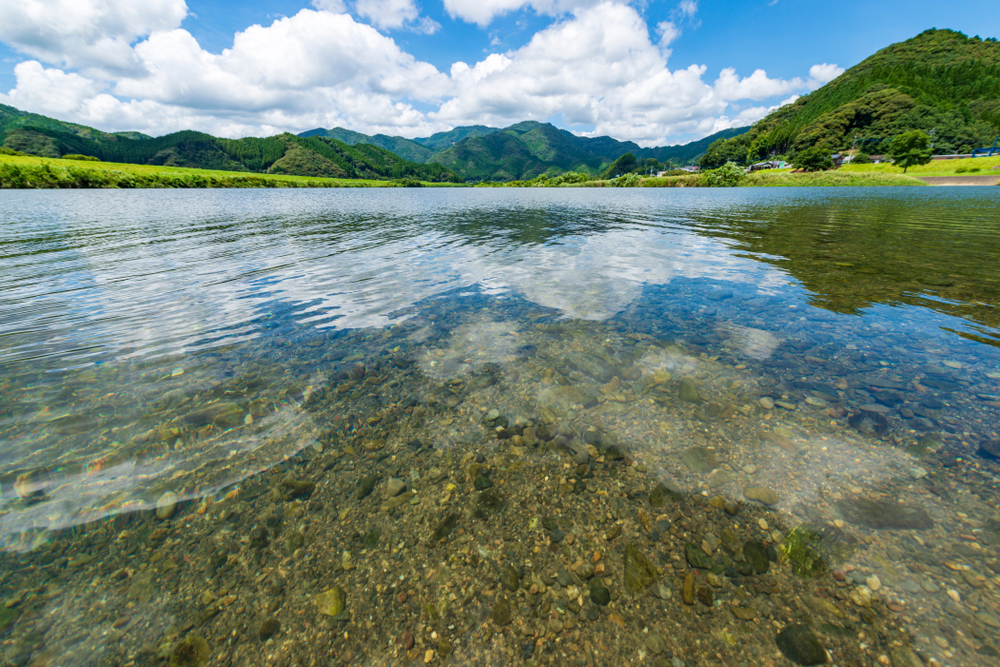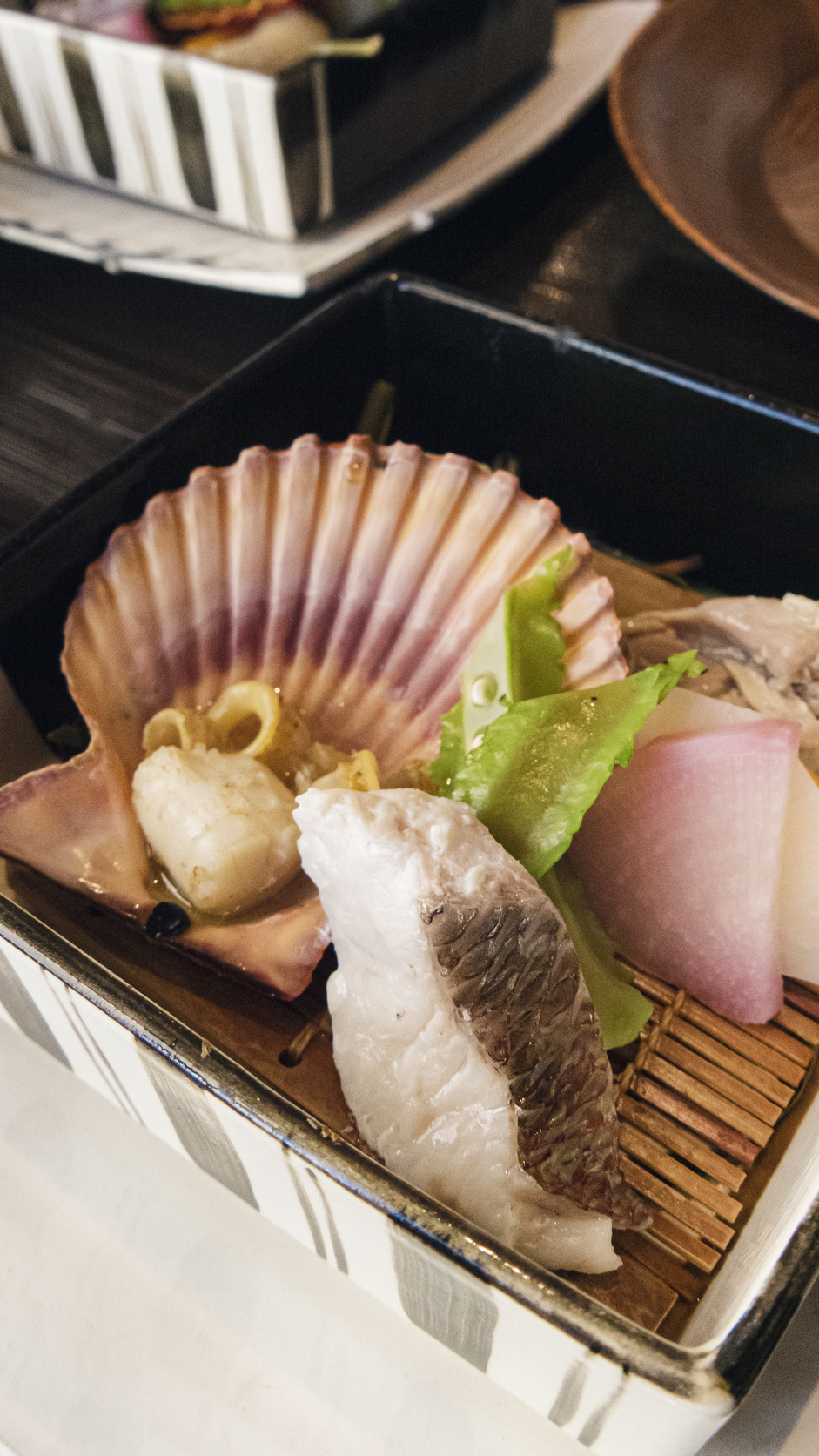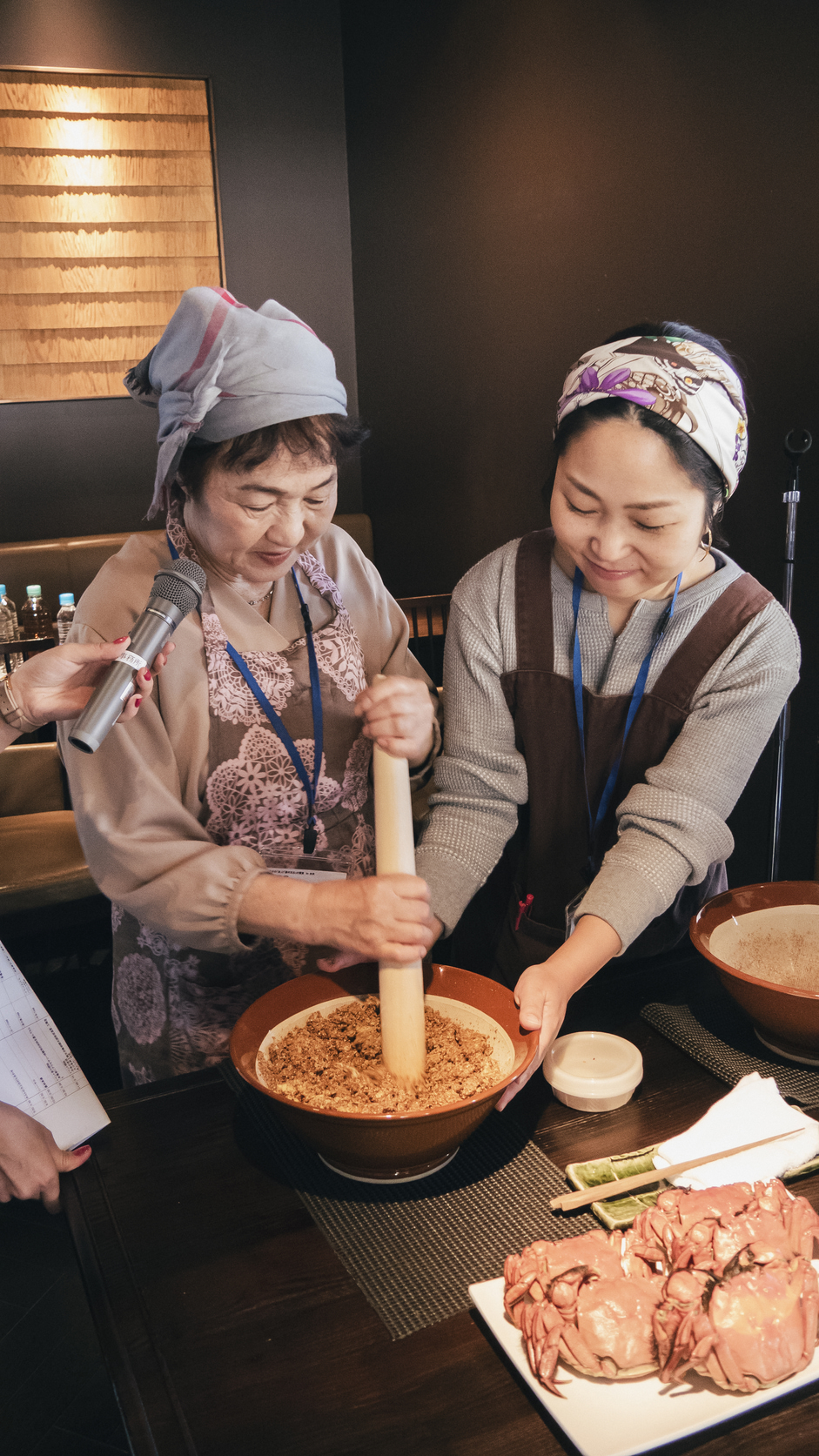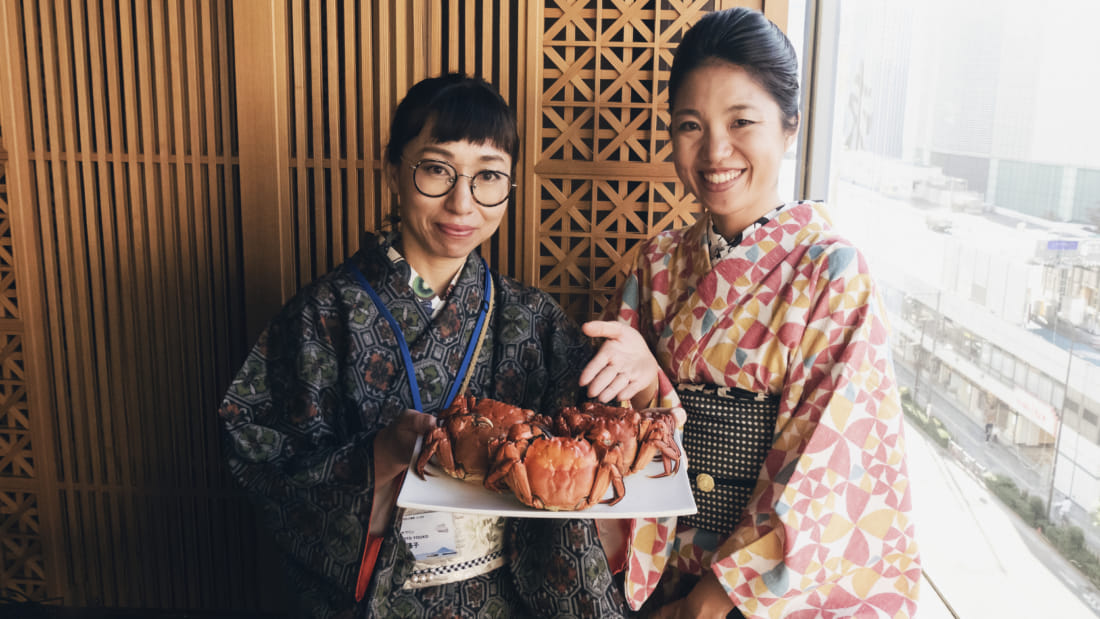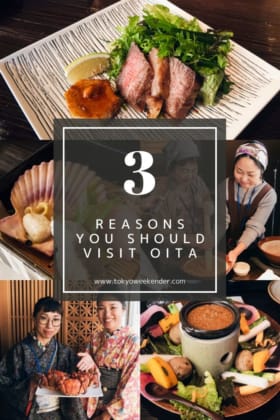During Rugby World Cup 2019 more than 30,000 visitors were privy to the warm hospitality of Oita Prefecture in Kyushu when Oita Stadium hosted five epic rugby matches. Most guests to this charming area indulge in the hot springs as Oita has the most hot springs in Japan.
With the launch of a new engaging travel website, even more international guests can discover the authentic wonders of southern Oita Prefecture, a colorful hideaway where indigenous crabs are caught by hand in freshwater streams, where sea kayaks glide through cerulean blue waters and inviting locals make the most of the land and the sea.
To experience the riches of southern Oita Prefecture, the TW team headed to upscale Zarai Oita restaurant in Ginza, where the wooden slats on the ceiling overhead are arranged like ship sails held taut in the wind, and the scenic bay windows overlook the shopping streets below and the passing Nozomi bullet trains.
Mouthwatering Oita Cuisine
The chef, specializing in Oita cuisine, serves an exclusive course menu highlighted by hiougigai – the noble scallop. This scrumptious morsel grows in vibrant shells and is native to the Saiki area of southern Oita. The scallops eaten today are cultivated in farms and come into season from late autumn to spring. The reason the shells grow in bright colors is a mystery – but the red, orange, purple and brown shells are used for decoration year-round.
While the course also features the mouthwatering beef and flavorful produce Oita is famous for – as well as freshwater eel smothered in a smooth sea urchin, miso and vinegar sauce that tastes like a rich mustard – the highlight of the course is a sesame dipping sauce called gomadashi prepared before our eyes by Shoko Kawachi.
Oita Home Cooking
The matronly Saiki native operates a farm inn out of her home called Kawachin-chi (The House of Kawachi) along with her husband. The farm stay experience has become a popular aspect of green tourism, where visitors stay in a local’s home and witness, and sometimes help, the residents maintain the land and produce foods and goods in a traditional manner.
Shoko Kawachi has lived in Saiki her entire life. Saiki is a fishing village on the coast of Kyushu at the Bungo Channel, where the Seto Inland Sea flows into the Pacific Ocean. The mountainous coastline is abundant with old forest growth, and the CO2 produced by the lush trees flows into the seas, creating an active breeding ground for healthy – and delicious – sea creatures.
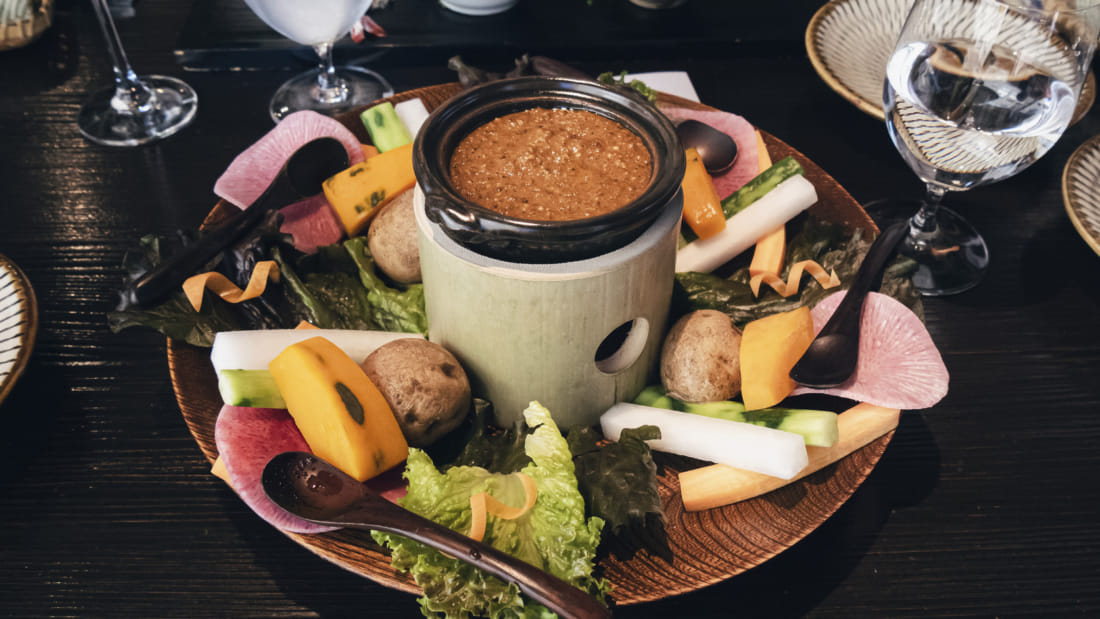
“Smells so good”
Those staying at Kawachin-chi can venture with Shoko’s husband to catch a freshwater crab called mokuzu gani in the stream running in front of their traditional Japanese farmhouse. Easy with a smile and a chuckle, Mrs. Kawachi has brought a selection of mokuzu gani with her to Ginza, which are steamed and displayed on a table that has been prepared for her.
Wearing a brown kitchen apron with pink embroidery, she turns on the flame of a one-burner stove and heats up a pan. She drops in sesame seeds and the pan crackles. The aroma – like buttery popcorn – wafts in the air. “Smells so good,” someone comments.
A bottle of soy sauce beside her, Shoko mixes the toasted sesame seeds with shiitake mushroom, crab, a little sugar and other ingredients to the family recipe she learned from her mother. She grinds the mixture with a pestle, smiling broadly as she answers her guests’ questions.
“It lifts my spirits when people come to visit,” she says.
A Secluded Island Stay
Another highlight of the course meal is the Fukashima white miso used as an ingredient in many of the menu items. This miso was homemade by another Oita native in attendance, Azumi Abe, who also hosts a farm stay experience at her home. Abe preserves the flavors of this special miso’s ingredients by boiling them slowly over an open fire – a cooking technique native to Fuka Island, which is dwindling in inhabitants.
Mrs. Abe has lived on Fuka Island, her husband’s homeland, for seven years. Located off the southernmost point of Oita Prefecture, the island is 4km in diameter and has 15 residents, five of whom belong to Abe’s family. They are not alone as Fuka Island is also home to more than 100 cats, and has become known as a cat’s tropical paradise.
The island is designated as a quasi-national park and is surrounded by coral, which is home to an abundance of colorful tropical fish, making it a popular destination for snorkeling and other water sports. Guests to Abe’s homestay experience, called Deep Marine Fukashima, can explore the surrounding waters in peace and tranquility.
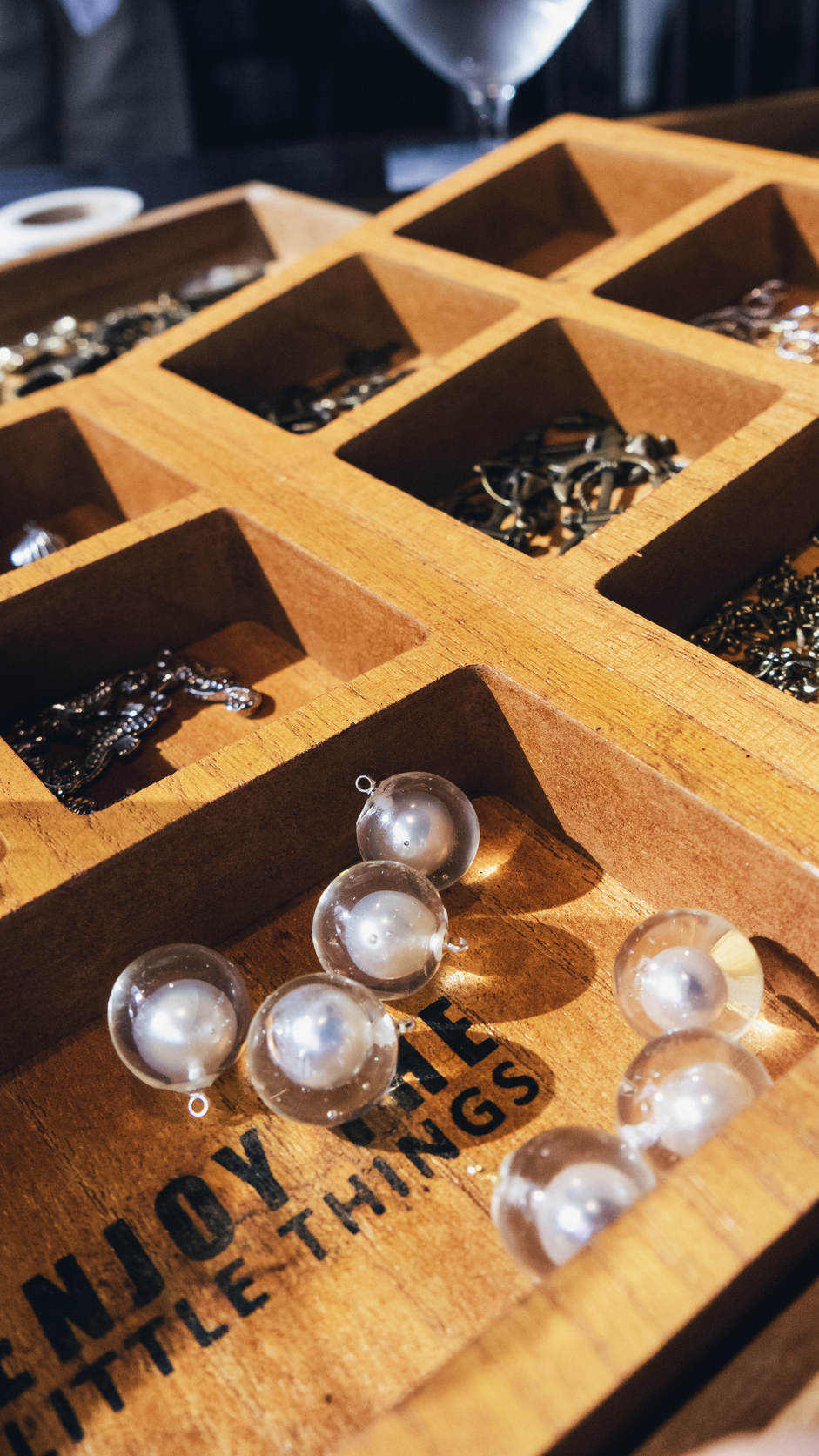
Explore Oita
Oita Prefecture’s southern region offers much more to explore, including the sandy shores of Himeshima Beach, the mysterious and picturesque Sennindo hut and picturesque Takahira Lookout Park. Experience authentic Oita through curated tours now offered through a unique partnership between ANA, Airbnb and the Oita Prefectural Government.
Find out more at hyperurl.co/TWAuthenticOita
Photos by Rose Vittayaset | Feature photo by kai keisuke / Shutterstock.com

